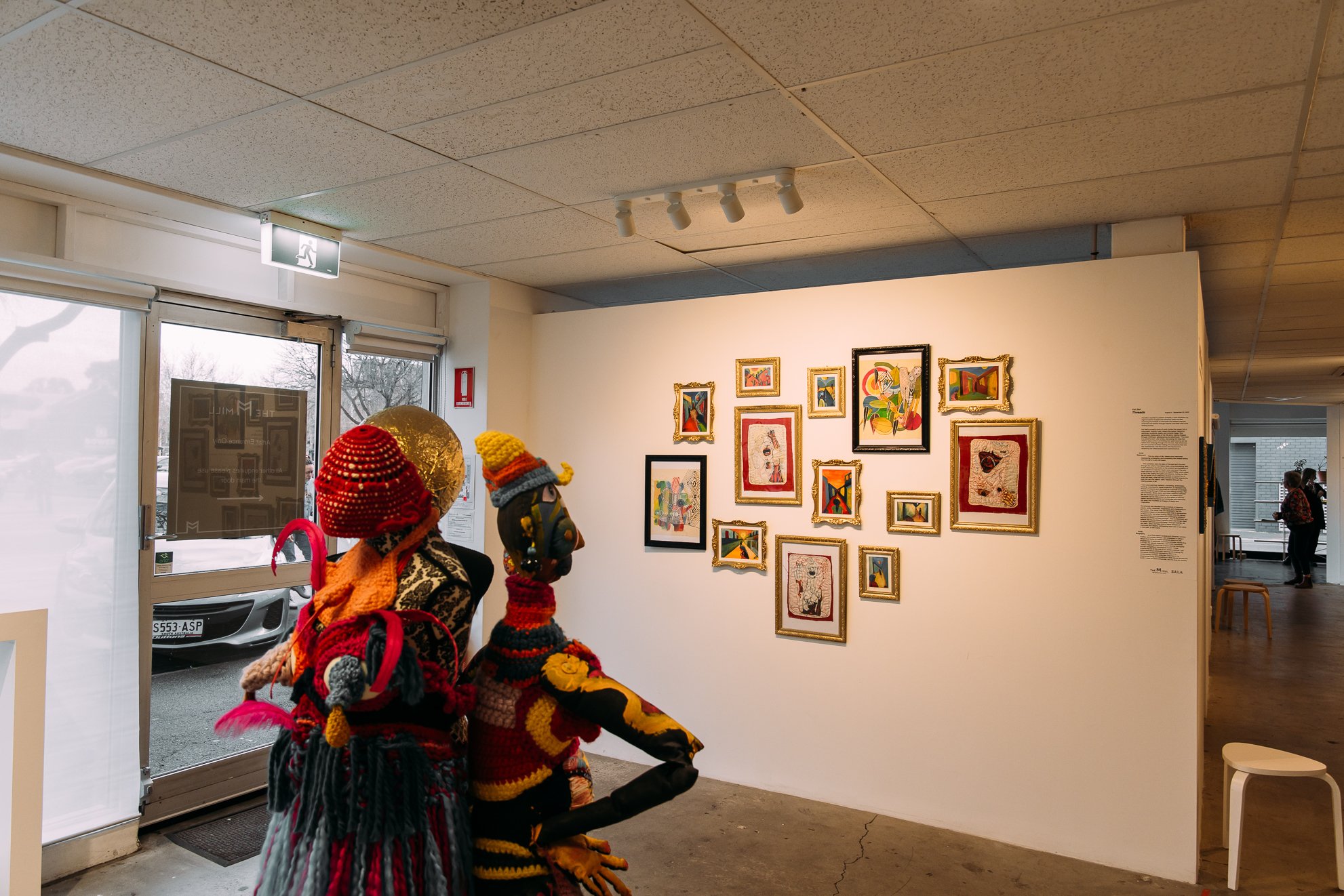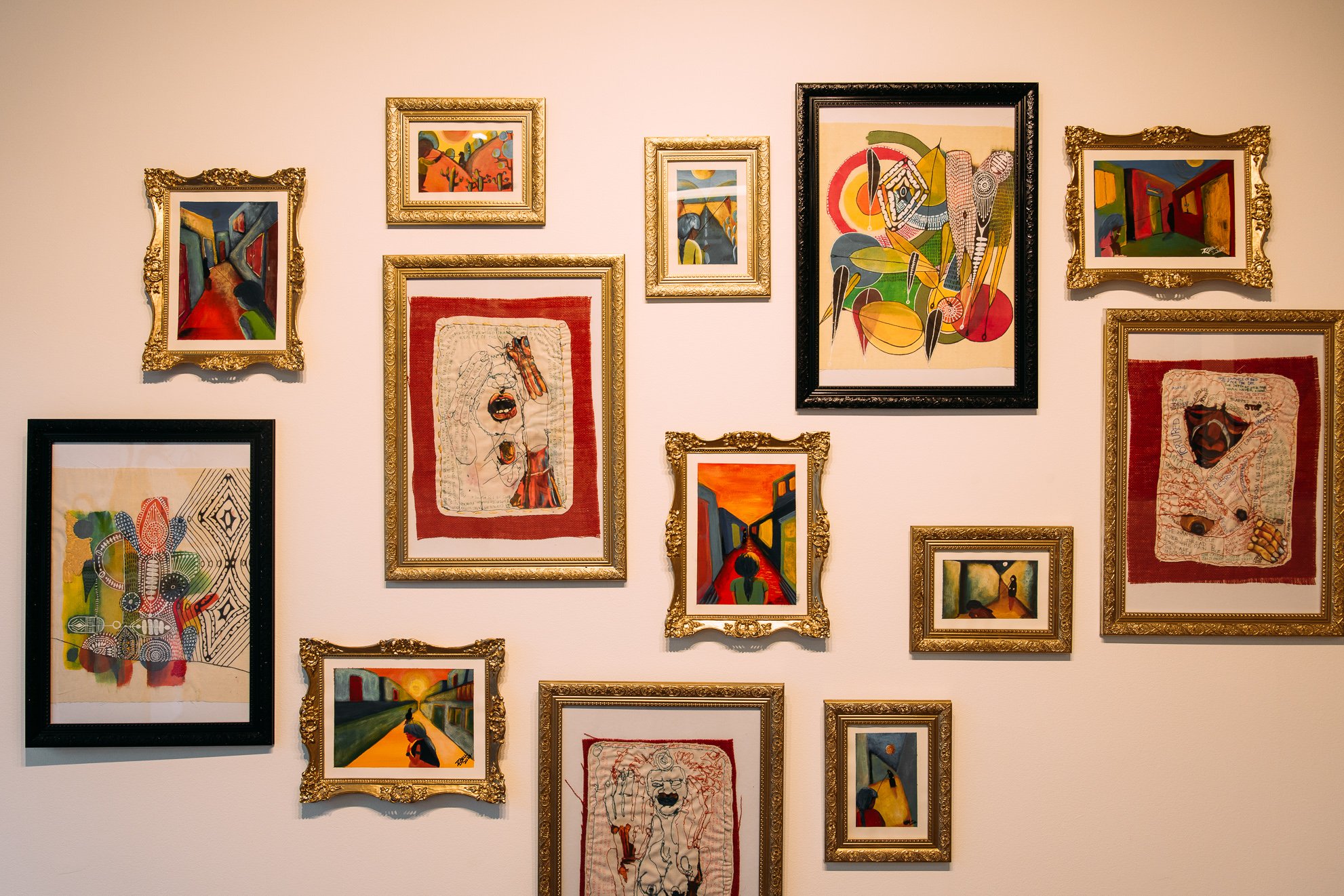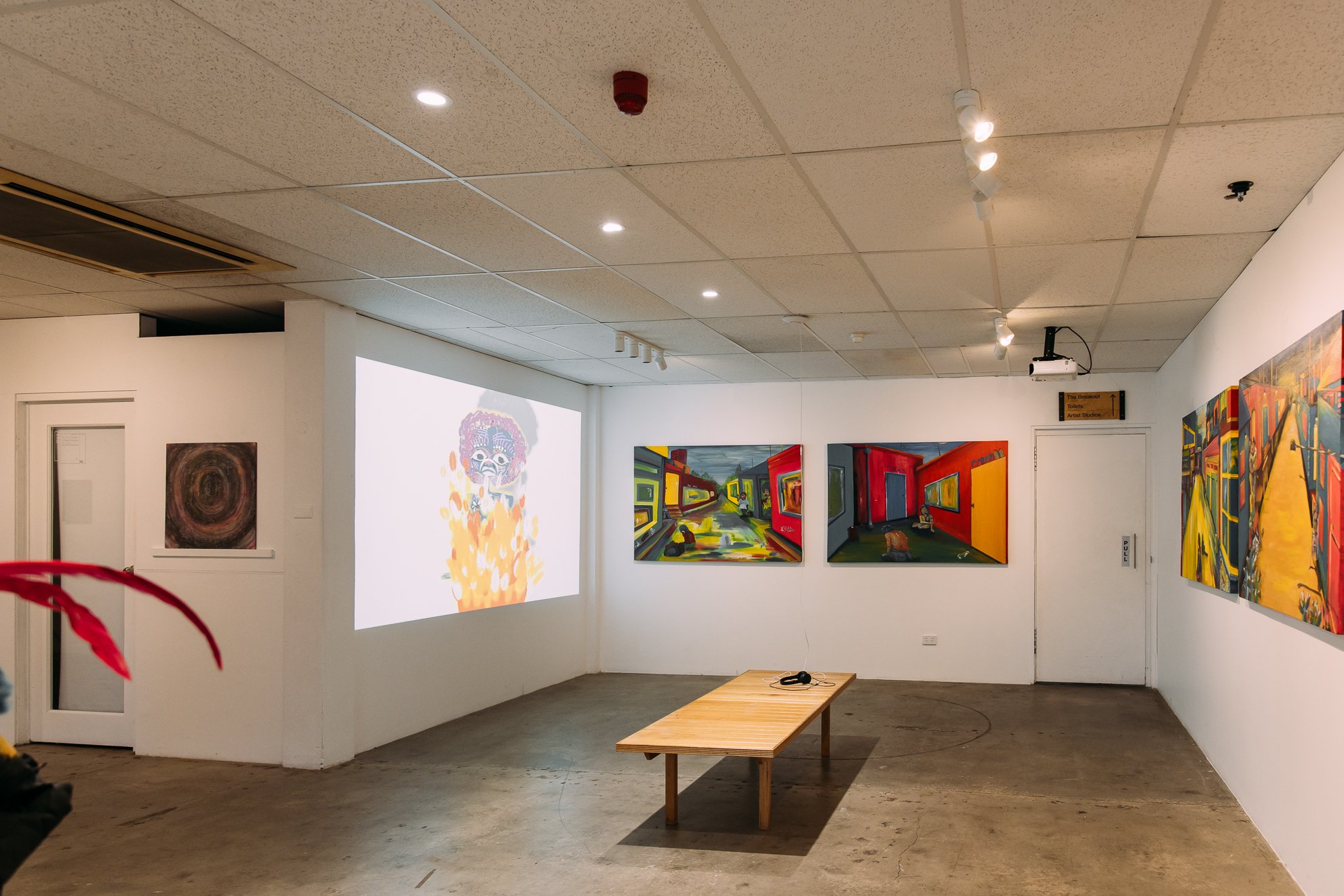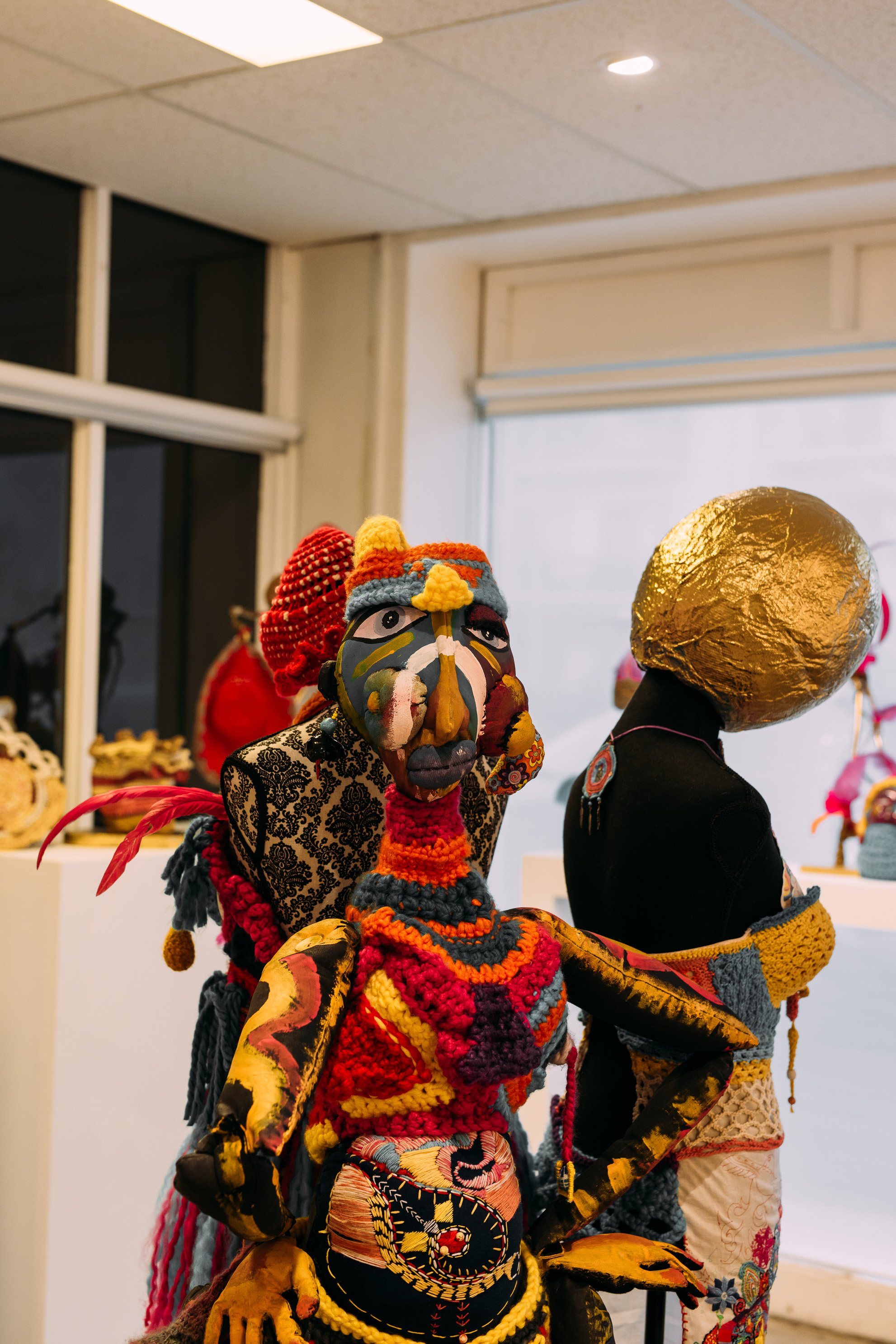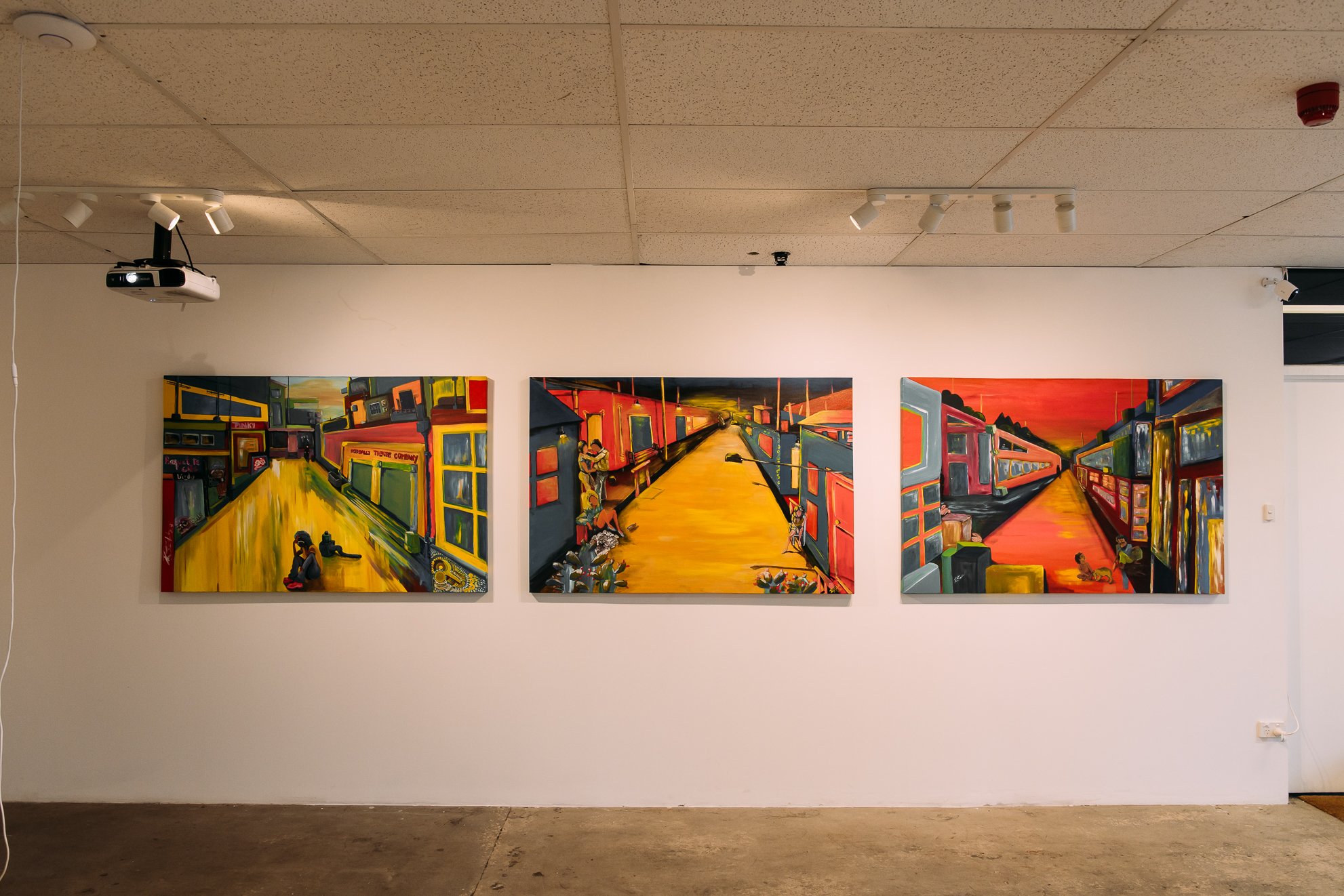Image: Courtesy of the artist
August 4 - September 22, 2023
Exhibition opening: Friday, August 4, 5:30-7:30pm
The Exhibition Space, 154 Angas St, Kaurna Yarta
Free entry, all welcome
-
You can find Kat Bell, Threads in The Mill Exhibition Space, located at 154 Angas St, Kaurna Yarta (Adelaide).
The Exhibition Space is open Monday-Friday, 10am-4pm.
Accessibility
The Mill has two entrances, the main entrance on the corner of Angas and Gunson Street and an accessible entrance further down Angas Street.
Both doors are locked from the outside, there is a doorbell on the main door that will alert The Mill team. They will meet you at the accessible entrance to welcome you into the building.
The Mill has concrete flooring throughout with no internal steps and a disability toilet on site.
Read more in-depth information on our accessibility web page.
The Mill is excited to present Threads, a solo exhibition by regional First Nations artist Kat Bell exploring the threads of memories and dreams that are stretched and broken through trauma, and their role in the healing journey.
-
This is a story of life, dreams and memories intertwining, entangling, and unravelling like threads falling from the tail of a wiry old beast.
The artist has used painting, basketry, crocheting, embroidery, beading, weaving and digital projection, to represent the threads of dreams and memories as a survival of complex trauma, living through PTSD and the healing journey.
Contrary to the darker, central topic of this exhibition, pieces are made using bright colours, playful imagery, and a childlike presence. The artworks are intended to be a mixture of pleasing, playful, wilful, dreamlike, imaginative, and challenging to the viewer. The viewer may not necessarily feel the immediate impact of the serious topic that is represented in these works, but when looking deeper into the pieces, and through written accompaniments, the somewhat uncomfortable and challenging nature of trauma and PTSD will bare through. This is intentional, as the artist believes that trauma doesn’t always mean that things need to remain dark and uncomfortable.
Through healing, we can learn, grow, and take hold of these threads of memories and dreams, rethreading them into a new story, a new path, a new future.
Why threads?
The use of textiles, fibres, paint, and other mediums seemed like the most apt way to depict how our dreams and memories can be interwoven, or even confused as time goes on and the details become blurred as our minds age and memories slip away into muddled up images of reality and imagination. It also, speaks to the artists relationship with thread-based artforms, such as embroidery, fabric dying, hand stitching, crocheting, knitting, and so on, in their healing journey.
The broader description
This exhibition tells the tales of the past and the now, through the artist’s First Nation lens, using storytelling, akin to the dreaming, that looks to the wisdom and guidance of our ancestors to heal her heart, mind, and soul. The wiry beast (trauma) has left an echo of itself (PTSD), which plays a role in her waking thoughts and dreams, visiting her (like the old spirits of our dreaming stories), to remind her of what has been, what she has survived and that despite the past she can find peace, calm, freedom through the healing power of art.
The artist is interested in how trauma expresses itself in our dreams, memories, and imaginings. How do we conceive and better understand these threads of memories, dreams, and imaginings, with and separate from their trauma beginnings? As each thread is unravelled over the years, how do we distinguish between what are threads of reality and those that are not, those that are the minds internal conjuring’s meant to protect the traumatised mind, those that are the individuals creations (a way of retelling events and seeing things through a different lens, whether intentionally or otherwise) or those that are simply broken, fragmented, damaged imaginings in our minds that are neither real or made-up?
Somewhat contrary to the darker notion of trauma, the artist has chosen to represent their experiences of trauma in a lighter note, drawing on the idea of dreams as a way of controlling how past trauma can be halted from seeping through into the now.
For more than 3 decades the artist suffered at the hands of their PTSD, with their trauma flooding through into every aspect of their life. A significant part of that was the way in which their trauma invaded their dreams. A life lived with nightmares, little sleep, a tightly wound nervous system and barely any reprieve from their past trauma, they were captive in what felt like an endless cycle of torture.
The mind is a powerful tool. Understanding its power and how to take back control of it, was the only way forward. This is where dreams and their role in dealing with trauma became key to the artists own recovery. Through a lengthy process of learning how to regain control of their dreams, mastering the events and their reactions within the dream state and pulling apart these images thread by thread, replacing them with the now (or reality as it is), gave them greater control over their waking experiences. But the artist continues to unravel the threads of their dreams and memories, asking (rationally and logically) always, what is real and what is not.
-
As a First Nation Gudjula and Girramay woman, mother, and autistic person, I am interested in using a range of art forms to create narratives about my life experiences, in particular "surviving complex trauma (e.g. C-PTSD, DV, sexual violence)", and most importantly "what it means for me to be a neuro-diverse Aboriginal woman navigating a neurotypical world". These experiences sit at the core of my artistic practice. I am passionate about continually learning and sharing my Aboriginal cultures and reimagining them in a contemporary context, while also drawing on my experiences living and travelling to other places around the world. I draw on these influences, and my love for country and the colours that lather the Australian landscapes.



